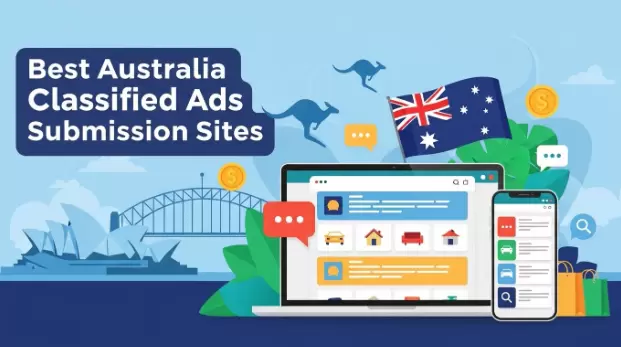We’re all tired of hearing about the “new normal.” I bet even now, as you read that phrase, you got a case of annoying shivers just as I did as I wrote it.
But the reality remains that the modern world will forever exist in two very distinguished phases - the world before the pandemic and the world after. As much as we wanted things to “go back to normal” in 2020 and maybe even in 2021, the reality is that many things have changed over the last two years.
Including marketing.
The truth is that during the pandemic, as everyone adjusted to uncertainty and change, consumer preferences, processes, and expectations changed as well. And in many cases, we’re not going back. Remote work, expanded digital and virtual experiences, and one-touch online shopping are just some of the changes that are here to stay. And that means that the marketing strategies we implement in 2022 must adjust to these new, now commonplace practices.
And so, let’s explore some marketing strategies to implement post-pandemic.
1. Address Customers as Friends Through Personalization
Personalization of marketing and customer experiences has been in business vocabulary for years. As early as 2018, an Epsilon survey revealed that 80% of consumers are more likely to make a purchase when brands offer personalized experiences.
But when the pandemic hit, a curious domino effect took that concept further.
Overnight, our lives, both business and personal, moved online. “Organizations overall were forced by the pandemic to accelerate their existing digital transformation plans in order to react to the fact that most of their customers were now primarily interacting with them through digital channels,” Brain Carlson of CMSWire writes. This switch gave businesses more access to customer information.
With more information comes more possibilities. And so companies could now personalize customer experiences and marketing using customer data. And so they did. Once that happened, the mere convenience of personalization now became an expectation. And so the concept of extreme personalization entered the mainstream.
Post-pandemic marketing strategy: segment and personalize.
Today, personalized marketing messages can not only get a potential lead’s attention. They can help create a genuine connection between the brand and its audience, boost engagement, and encourage long-lasting customer loyalty.
BLOCKQUOTE: “Beyond geography, we have learned marketing messages need to be personally relevant, aligned to an individual’s situation and values, as opposed to demographics, such as age and gender. Creating a personal, human connection within any commercial message requires defining consumer segments that describe people according to multiple dimensions that influence their purchasing behavior — from their psychographics to attitudinal characteristics.” – Harvard Business Review.
To facilitate such personal relationships with customers, brands must employ tools to personalize email, social media, and paid advertising messages. Using analytics, customer surveys, live-chat data, and other efficient marketing tools segment your audiences and identify their needs. Then target specific groups of customers according to their preferences.
From algorithm-based sponsored ads to personalized recommendations for returning customers, marketing efforts must cater to audiences in very specific ways. So get to know your customers and treat them as your long-time friends. Because they are.
2. Focus on Customer Experiences
Let’s be honest, for every product or service a company offers there is already something similar on the market. Nothing is completely unique and everyone has a competitor. So the way to stand out in the sea of competition is through offering unique customer experiences.
Customer experience expert, Shep Hyken, hits the nail on the head when he says, “People no longer compare you just to your direct competitors. They compare you to the positive experiences they’ve had with companies in any industry.”
This is especially true post-pandemic. After all, we have collectively experienced crisis, isolation, fear, and hardship. As we enter the new world, we seek human connection, positive social interactions, and rewarding experiences. All of that should take center stage in the business theater through interactive and personalized customer experience.
As a great American poet, Maya Angelou said, “People will forget what you said, people will forget what you did, but people will never forget how you made them feel.” In the business world, that means people might forget what product they bought from a business or the details of a specific service they received. They will not, however, forget how a brand treated them.
Post-pandemic marketing strategy: connect customer experience and marketing
Customer experience with a brand does not start when the customer clicks the “Check out” button. It begins at the very first interaction with a brand. Excellent customer experience is the best marketing strategy. So treat the customer journey with extreme care from the start. That means catering to prospective leads and long-time customers in the same kind, personal, and accommodating way.
Providing educational content, building and maintaining online communities, simplifying onboarding and checkout processes, and delivering excellent and timely customer service are just some examples connecting marketing with customer experience. Doing so will improve customer satisfaction and loyalty in the post-pandemic environment.
3. Frame Products and Services as Solutions to Problems
Personalization and customer experience help build customer loyalty because both of those strategies build trust between customers and a brand. After all, relationships built on trust are the ones that last. Experts agree that as the world has endured the pandemic, business relationships matter more than ever and more than anything, including products and services themselves.
According to Harward Business Review, “Covid-19 has placed a new emphasis on relationships. Faced with a virtual sales environment, teams with existing relationships have been able to maintain revenue momentum, capitalizing on the strength of their prior bonds. In contrast, prospecting for new customers has required an evolved set of skills focused on selling solutions, not products. Trust and integrity are fundamental to driving market momentum.”
And so to build trust, brands must show their audiences that they understand their customers’ needs and have effective solutions to offer.
Post-pandemic marketing strategy: implement solution-based pull marketing
There is a world of difference between push and pull marketing. With push marketing, brands push products on consumers. Placing “impulse buy” items near the registers in grocery stores is one example. Pull marketing, on the other hand, pulls consumers toward products because the product offers a solution to a specific problem. Content marketing that educates audiences about available products and services that offer solutions to specific problems serves as an example here.
Creating marketing materials that fit into this strategy requires a good understanding of customers’ needs. Identifying pain points is a crucial step in this process. Reviewing customer feedback, using analytics, and implementing AI-powered tools to get as much information about customers as possible can help create the best picture of customers’ needs. Then, it’s time to roll up your sleeves and address customers’ pain points with solutions. Sometimes that might mean simple adjustments in marketing strategies. Other times a brand might consider redirecting its product and service development to better-fit market demands.
4. Define Core Values and Take a Stand
In the past, many businesses had avoided taking a stand on social and political issues due to fear of losing customers. After all, we all remember the controversial cases of Chick-fil-A and Hobby Lobby where the brands' top executives’ beliefs sparked boycotts and negative publicity.
However, in the post-pandemic world where we all have witnessed global unrest on various social issues, defining a brand’s position on certain issues could prove to be beneficial. According to Harvard Business Review, “The key themes from EY Future Consumer Index research show that while quality, convenience, and price still very much matter to consumer choice, factors like sustainability, trust, ethical sourcing, and social responsibility are increasingly important to how consumers select their products and services.”
This strategy might involve some risks, but proponents of brand activism argue that today’s consumers vote with their wallets. This is especially true with Generation Z, the generation of “backyard activism,” coming of age and gaining buying power.
Post-pandemic marketing strategy: lead with purpose
Embracing brand activism as a marking strategy can seem daunting, but it can involve simple tactics such as donations to an organization that works toward a specific purpose. Other examples of brand activism include launching a new product that supports a cause and drives sales, creating digital media to educate customers on the importance of a cause, or encouraging customers to share how they support a specific cause.
Not only can brand activism help the cause, but it can also build a community around it. Specific brand activism marketing campaigns, like the one Nike created following the 2020 civil unrest in the United States, create important conversations. These conversations, in turn, bring consumers together and unify them with the brand, increasing brand awareness and tying it to the specific purpose.
5. Embrace new emerging technologies and channels
Since the dawn of time, new technologies have stirred consumer preferences. The challenge of today, of course, is the speed with which innovations demand business adaptation. While our great-great-parents might have had a few years or even decades to move from newspaper advertising to radio commercials, today’s consumers will not wait that long. Digital transformation, accelerated by the pandemic, demands businesses to implement the newest tools to reach their audiences.
For example, only a few years ago, TikTok was a mere entertainment app for teens who enjoyed filming trendy dance moves. In 2021, the social media platform reached 1 billion annual users and features sponsored content from various industries.
And so it’s important to not miss the boat and embrace innovation. After all, meeting consumers where they are and having access to global audiences using available means can mean the difference between becoming a successful brand or struggling to reach the right people.
Post-pandemic marketing strategy: get with the times and invest in the newest tech
Of course, businesses cannot afford to quickly jump on every new opportunity and embrace every new tech tool available. So, it’s important to do your research. Find out what your audiences use and need and meet them there.
Look into tools like live chat, SMS technology, voice tech, IoT, virtual and augmented reality solutions, and the like. See if they could be a good fit for your business and customers. Explore new channels, such as WhatsApp and Tik Tok. If your customers are using them, perhaps you can reach them on these emerging platforms. Experiment and find what works for your business.
Marketing Strategies for the New Age
The reality of today’s market is that the pandemic changed every aspect of your lives and we’re not going back to what the world was before 2020. Accelerated digital transformation, the importance of social justice, continuous tech innovations, and generational change of buying power is reshaping marketing strategies of the future.
So we all must get with the times and embrace the new post-pandemic world. In every aspect of life and business.
Including marketing.


 Table of Content
Table of Content










